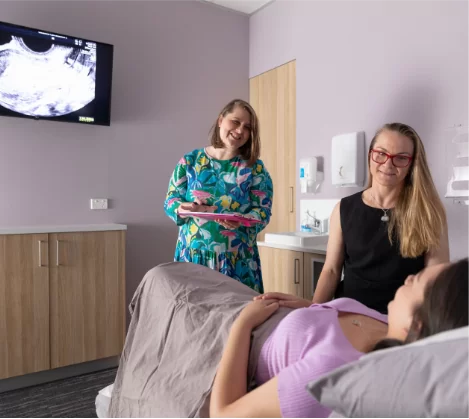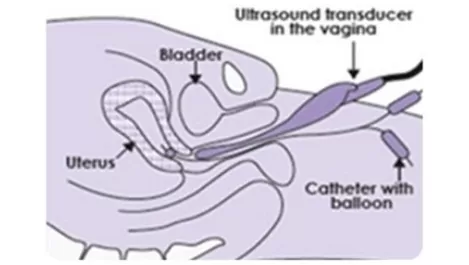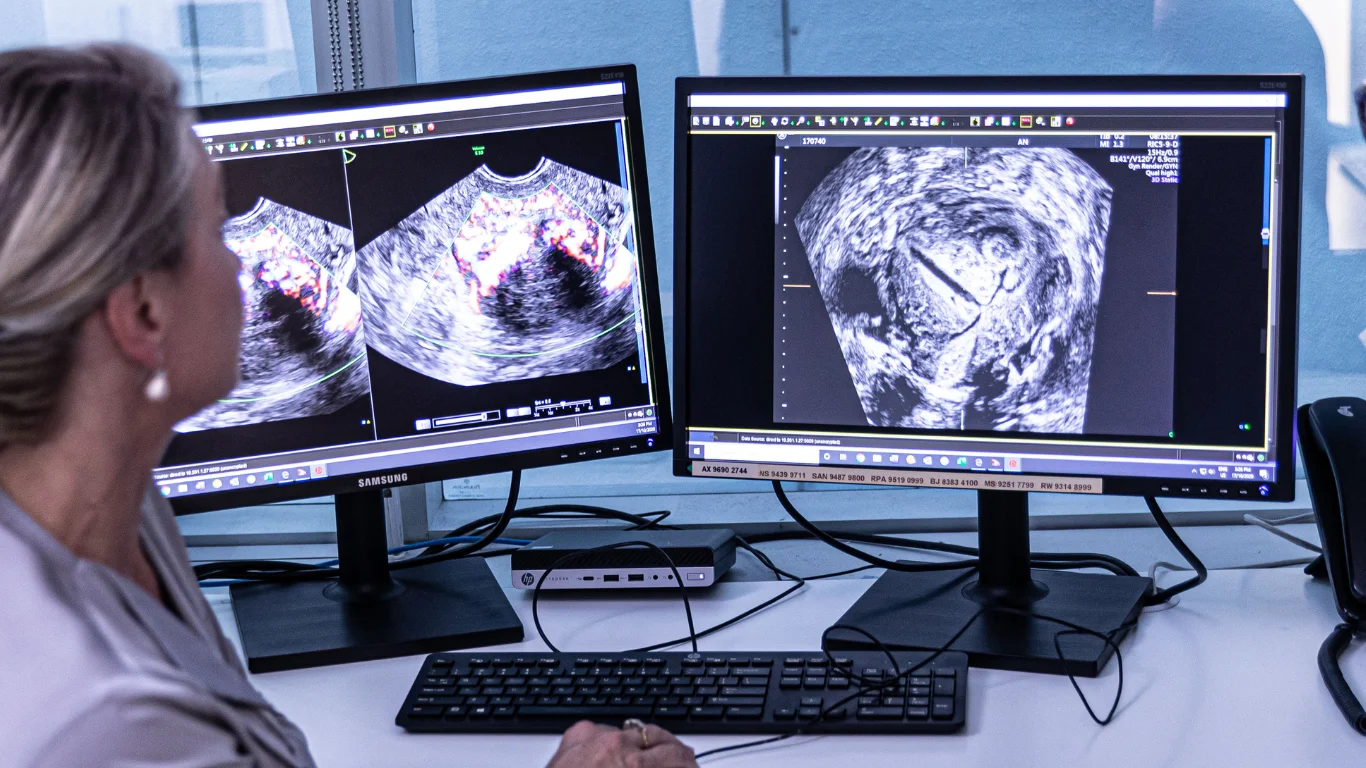Sonohysterography
What is Sonohysterography?
Saline infusion sonohysterography is a technique developed to better image the uterine cavity and the lining of the womb.
Our specialist obstetricians and sonographers may use this technique to assess abnormalities of the uterus and endometrium (lining of the womb). If your referring doctor also wants us to test for tubal patency, we will also use a special occlusive catheter and special ultrasonic contrast agent.

How is a sonohysterography performed?
When you come to any of Ultrasound Care’s rooms for your scan, our team will make you comfortable in a private room and will then conduct a transvaginal ultrasound examination. Then your Ultrasound Care doctor inserts a speculum into the vagina to visualise the cervix. A soft plastic tube is then inserted into the womb (uterus) and sterile saline is infused by your doctor while the sonographer watches with ultrasound. The solution distends the cavity of the womb which allows a much better view of the lining and uterine wall.
Why is a sonohysterography procedure performed?
You may be referred for a sonohysterography for a variety of reasons. This procedure is used when:
- Sometimes the ultrasound can point to a problem with menopausal hormone therapy.
- Sometimes the sonohysterogram can show why the periods are very heavy or why there is bleeding after intercourse.
- Sonohysterography can detect benign endometrial polyps or adhesions within the uterus which may prevent conception.
- Recurrent miscarriage may be due to fibrous bands (septations) within the uterine cavity or to an abnormal uterine shape.
A side effect of Tamoxifen therapy (which is used for the treatment of breast cancer) can be polyps, thickening, or even cancer of the uterine lining.
Sonohysterography can distinguish true abnormalities from thickening which happens beneath the uterine lining and is a common finding of no significance or concern.
Blocked tubes are a common cause of infertility. Hysterosalpingo-contrast-sonography is a modification of the sonohysterography procedure that involves injecting a special solution that is easily identified on ultrasound in the uterus.
The fluid can be seen as it passes along the Fallopian tubes, and this will show your doctor if there is any blockage.

When should a sonohysterography be done?
If you have very irregular bleeding the test can be done at any time.
If you are having regular cycles and there is a chance of pregnancy, the procedure should be performed in the first 12 days of the menstrual cycle, before ovulation. This avoids the chance of the sonohysterography interfering with the implantation of the embryo.
Will the procedure be painful?
Sonohysterography does not require hospitalisation, anaesthetic or analgesia. Some women have some period-like pain during or shortly after the procedure and tubal patency studies can cause a bit more cramping.
Unless you have an allergy, when you book your scan appointment, our care team will recommend that you take two Panadol or Naprogesic tablets before attending for your scan.
What happens after the procedure?
Our care team will recommend that you sit and rest for 10 minutes or so after the test. We will explain the results to you and forward the report to your referring doctor. Your referring doctor will then be able to determine whether or not you need further treatment.
What happens after the procedure?
Feeling faint:
Some women feel a bit faint after the procedure but recover after a rest.
Bleeding:
Some women have a small amount of bleeding afterwards, or over the next few days. This is due to the balloon or the tube rubbing on the endometrial lining and causing it to shed before the normal period. This is nothing to be concerned about.

Infection:
There is a risk of introducing infection, though this is extremely rare. If there is a chance that you already have a pelvic infection the procedure should be avoided because of the risk of it being exacerbated.
If you have an artificial heart valve or any other reason to need prophylactic antibiotics, it is best to take the antibiotics before the procedure or as soon as possible afterwards.
If you have any concerns, please talk to the Ultrasound Care doctor about your history before the procedure so that we can better look after you.
How do I arrange for a sonohysterography procedure?
When you have been referred for a sonohysterography, please call the Ultrasound Care practice most convenient to you in Sydney. Our specialist obstetricians and sonographers can provide this procedure at all our rooms and our admin team will help find an appointment that best suits your needs.





